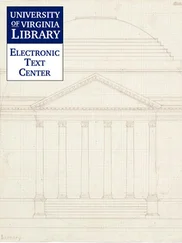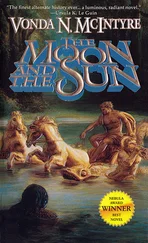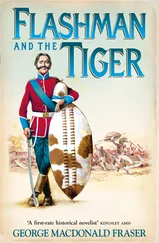The answer has, since that day, become a staple of sports and weather broadcasts throughout the world. Its inventor was a former NASA physicist by the name of Leonard Reiffel. After retiring from his government career, Reiffel turned to hosting a local Chicago children’s science show called The World Tomorrow . He invented this technology as a visual aid for the show, and only later pitched the idea to his network’s sports and weather departments. His original name for the device was the “superimposed dynamic television display system,” but his mother thought it was too complicated, and she coined the now-famous term the “Telestrator.” The invention was so important to the history of television that Reiffel was awarded a 2004 National Academy of Television Arts and Sciences Emmy for pioneering the Telestrator and the concept of Telestration.
Dr. Leonard Reiffel was a true polymath. In his almost ninety years (he died of cancer in 2017 at the age of eighty-nine), he was granted more than fifty patents; was a colleague of Enrico Fermi at the University of Chicago; worked with former Nazi scientists brought back to the United States as part of Operation Paperclip; worked on NASA’s Apollo program, rising from the position of an outside consultant to the deputy director of the entire program; authenticated priceless artwork for the Hermitage Museum in St. Petersburg, Russia; won a Peabody Award as a children’s broadcaster; wrote science-fiction and thriller novels; and acted as a consultant for Ukraine and Belarus following the Chernobyl disaster. If you’re feeling inadequate right now, well… join the club.
But it was a particular program starting in the late 1950s that interests us the most. Reiffel was asked by the U.S. Air Force to be its director. The program never happened (thank whatever higher power you want to thank), but in its planning stages it was officially called “A Study of Lunar Research Flights,” and its beyond top-secret nomenclature was Project A119.
If it had been carried to fruition, it would have been one of the most ridiculous projects ever envisioned. It had no practical purpose. It had no discernible national security goals. It was solely designed to show the world that we could do something this dumbspectacular.
And Leonard Reiffel was in charge.
• • •
The incessant beepingchirped away in the key of A-flat.
Beep. Beep. Beep.
The sound lasted three-tenths of a second. Then came three-tenths of a second of silence. Then the sound again. Over and over.
It was a sound that changed history. The NBC radio announcer on that night, October 4, 1957, understood the ramification of that beeping.
“Listen now,” he said, “for the sound that forevermore separates the old from the new.”
The object making that incessant sound was not very big—about the size of a beach ball. It only weighed 184 pounds. But it spurred on a revolution in science and technology that prompted the United States to put a new national priority on beating the Soviets at their own game. Through a radical reorganization of how we operated in science, technology, and engineering—from the laboratories of universities, to the factory floors of private industry, to the corridors of power in Washington—American innovation would never be the same. We would eventually put our own satellites into space (first, Explorer 1, and then later, the Corona reconnaissance satellite), reorganize defense research into a powerful organization (the Advanced Research Projects Agency, now the Defense Advanced Research Projects Agency), and create a civilian space agency (NASA) to fly America into the great beyond.
Eventually.
But at that moment, something needed to be done sooner rather than later. We needed to prove to the world that we hadn’t lost the space race before it had even begun. The American people needed a sign to reassure them that the Soviets did not have a permanent upper hand—that Sputnik wouldn’t soon be replaced by Soviet ICBMs raining down on the United States. We were supposed to be the world’s innovators. We invented potato chips, condensed milk, electric light bulbs, photographic film, the phonograph, cotton candy, the mousetrap, the airplane, ice pops, and chocolate chip cookies. We invented sunglasses, nylon, and the microwave.
We invented the atomic bomb.
America needed to show the world we were back in the game.
And we needed something big.
• • •
Leonard Reiffel hadno desire to leave Chicago. He was a native of the Windy City, and greatly enjoyed his exciting and rewarding job working alongside physics legend Enrico Fermi at the University of Chicago’s Institute for Nuclear Studies following the conclusion of World War II. But in 1949 he was given a chance to manage all of the cutting-edge physics research at another Chicago-based institution, the Armour Research Foundation (ARF—now known as the Illinois Institute of Technology). From that year through 1962, Reiffel and his team pushed physics to its limit, working on projects that studied the global environmental effects of nuclear explosions.
Sometime before May 1958 (Reiffel isn’t quite sure of the exact date), the U.S. Air Force asked the ARF team to investigate something truly out of the ordinary: “the visibility and effects of a hypothetical nuclear explosion on the Moon.” The Air Force wanted to surprise the Soviets and the world. Hey, look at what we can do. We can blow the hell out of the moon.
Reiffel, to his credit, knew that he didn’t have the necessary expertise in-house to do this kind of a study. To supplement his ARF researchers, he brought on Gerard Kuiper, the expert on planetary physics whose name you might recognize from the Kuiper belt, a disk-shaped region beyond Neptune that contains hundreds of thousands of icy bodies and a trillion or more comets. To round out the group, Kuiper suggested that Reiffel bring in a young graduate student from the University of Chicago whose name you’ll likely also recognize: Carl Sagan.
Wait… that Carl Sagan?! The lovable, affable, and eminently huggable guy who was on TV when I was growing up, and who made me love science as a kid? “Billllllions and billlllllions” guy? He wanted to nuke the moon?
Yes. That Carl Sagan.
Sagan’s job was to do math. Lots of math. It was important to the project that someone like Sagan could accurately model the expansion of the dust cloud that would be caused by a nuclear explosion on the moon. We needed to know how the moon would react so that we could know if the explosion could be seen from Earth. After all, that was the whole point of the program.
And this brings up two important questions:
1. Why would self-respecting scientists agree to a project to detonate a nuclear weapon on the moon?
2. Would this thing work in the first place? What would a nuclear explosion on the moon look like?
To answer the first question, we need to put ourselves in the shoes of American scientists in the late 1950s/early 1960s. This was a time when American science was (unfortunately) inextricably linked to American Cold War policy. Although the age of McCarthyism had ended, scientists still vividly remembered when Robert Oppenheimer was publicly flogged for taking a position considered antithetical to U.S. national security—opposing the creation of the hydrogen bomb.
But it wasn’t just fear that inspired physicists, chemists, biologists, astrophysicists, and others to join university laboratories, private industries, or government institutions that were working on defense research. Most of these scientists were patriots. They believed in what they were doing. This was a fight to the death, or at least for the future of the free world. These men and women (but mostly men because of the times) had a skill set that was integral for the security of their nation. Sometimes it’s a simple as that.
Читать дальше











